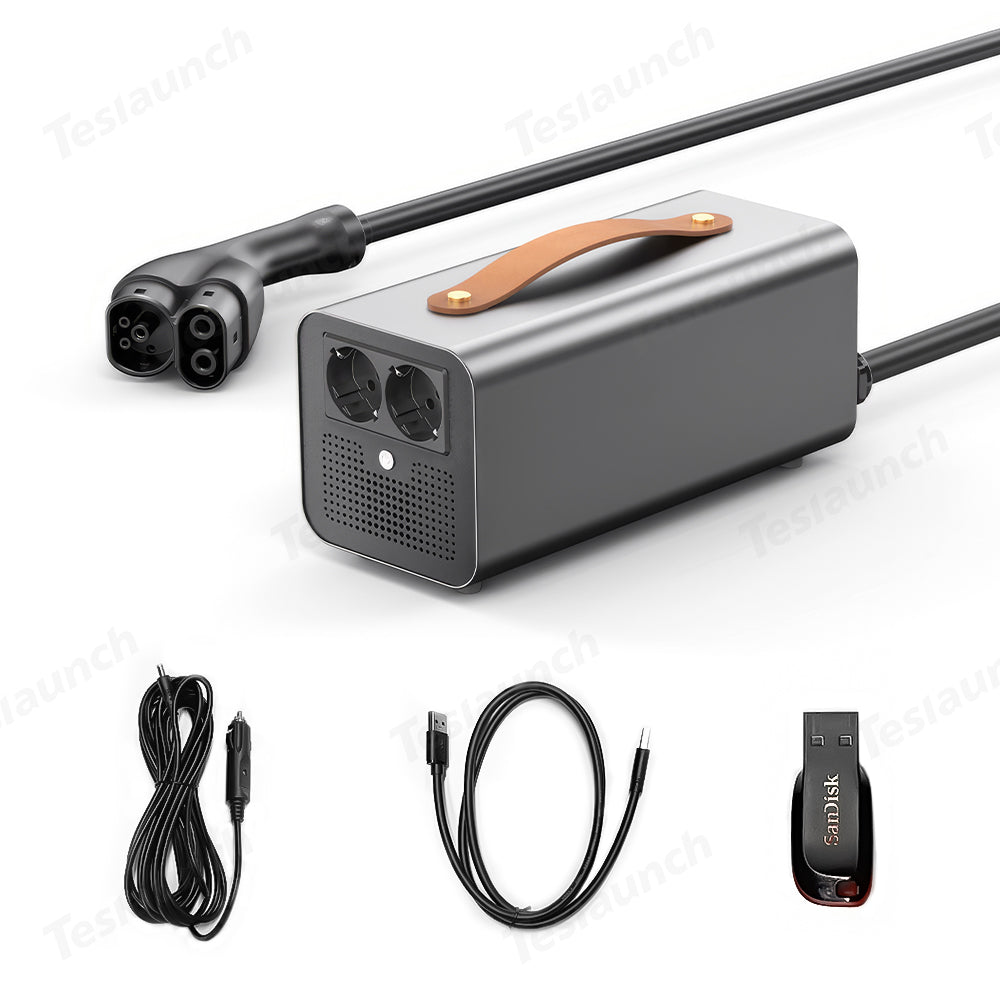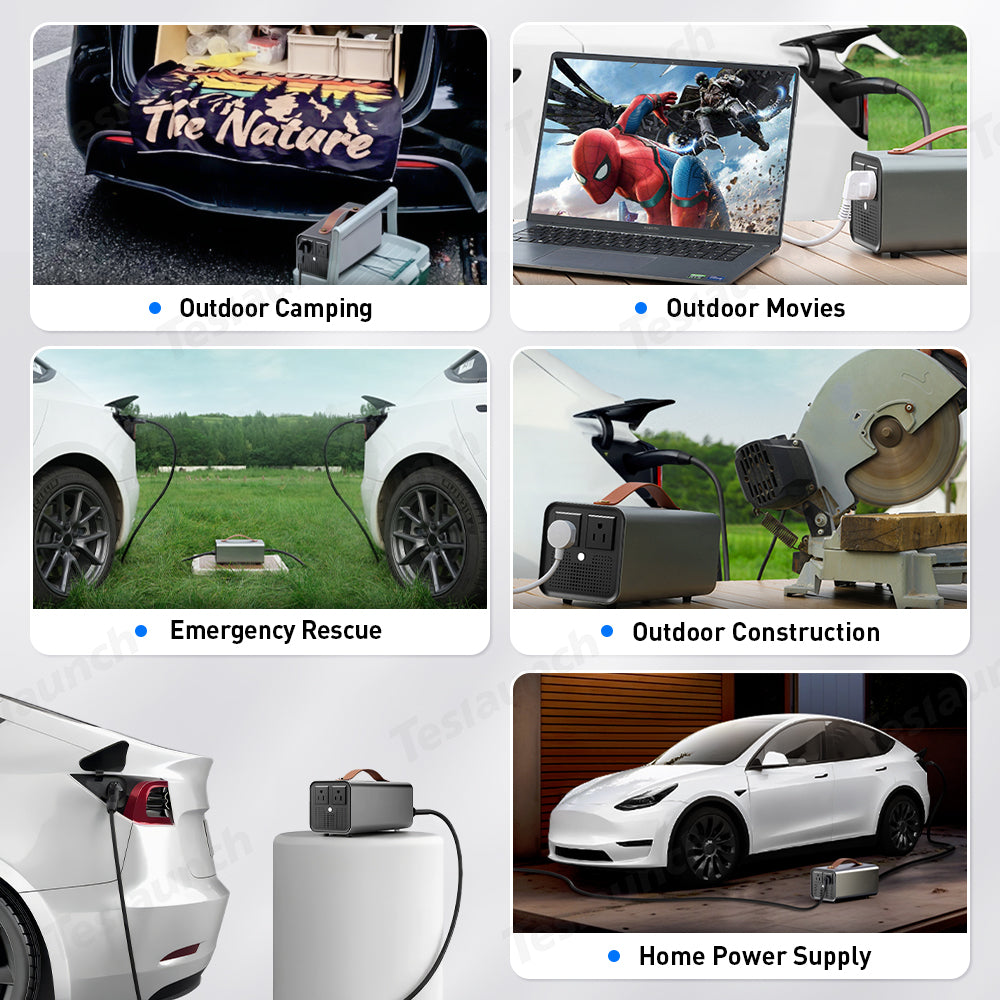Tesla V2L Explained: How Vehicle-to-Load Powers Everyday Life
Electric vehicles are doing more than just driving now. One of the most useful new features is Vehicle-to-Load (V2L), which lets your car power things like appliances and tools. Tesla is starting to add this feature to some of its models. In this guide, we'll look at what Tesla's V2L does, how it works, how it can help in everyday life, and how it compares to similar features from other brands.
What Is Tesla's V2L Feature?
Vehicle-to-Load (V2L) allows an electric vehicle to deliver power from its battery to external devices, appliances, and tools. It enables your Tesla to act as a generator, powering household items or tools directly from the car's battery.
How Does Tesla Enable V2L?
Tesla's implementation of V2L depends on the model and its hardware capabilities. Instead of relying on a standard wall outlet or generator, certain Tesla vehicles can export electricity via their charging port or dedicated onboard power outlets.
- Some Tesla vehicles, like the Cybertruck, are expected to support V2L natively.
- Output is typically delivered in AC (Alternating Current) via onboard inverters.
- Expected output capacity can reach up to 11.5kW on models like the Cybertruck—sufficient for most household or outdoor appliances.
Do Tesla Vehicles Currently Support V2L?
As of 2025, full V2L functionality is primarily expected with the Tesla Cybertruck, although retrofitting or future firmware updates may expand compatibility to other models. For now, Tesla's support for V2L is more limited than that of brands like Hyundai or BYD.
V2L vs V2G: What's the Difference?
- V2L (Vehicle-to-Load): Powers external devices only—your Tesla becomes a mobile power bank.
- V2G (Vehicle-to-Grid): Feeds electricity back into the grid, supporting grid stability and potentially lowering electric bills.
Tesla is exploring V2G but is still in early testing, mainly in regions with supportive energy policies.

How Tesla V2L Works
Power Output and Connectivity
Tesla's V2L-capable vehicles use a high-capacity lithium-ion battery and an integrated inverter system to output usable AC electricity.
- Voltage/Power: 120V or 240V, depending on region and appliance needs.
- Output Limit: Up to 11.5kW (Cybertruck).
- Ports: Standard wall-type outlets or NEMA plugs on the vehicle's exterior or interior.
Compatible Use Cases
- Home Appliances: Fridges, coffee machines, laptops, routers.
- Outdoor Equipment: Lighting, electric grills, projectors.
- Work Tools: Power drills, saws, small compressors.
- Emergency Backup: Charging phones and running medical devices during blackouts.
Real-Life Benefits of V2L
A New Level of Energy Flexibility
Tesla's V2L turns your vehicle into a mobile energy hub, reducing dependence on home batteries or gas-powered generators. Whether camping or dealing with a blackout, your car becomes your most versatile appliance.
- Power your home temporarily during outages.
- Use your Tesla battery during peak pricing hours to avoid high utility bills.
- Reduce reliance on diesel or gas generators, lowering emissions and noise.
Game-Changer for Outdoor Adventures
Tesla V2L is a dream for campers and van-lifers:
- Power induction stoves, lighting, and fans at remote campsites.
- Recharge cameras, drones, and e-bikes on the go.
- Use heated blankets or portable AC units for added comfort.
Emergency Preparedness Like Never Before
Natural disasters and grid failures are unpredictable. A Tesla with V2L:
- Keeps critical electronics running during emergencies.
- Provides backup power to medical devices and communication tools.
- Enables mobile response efforts or shelters in remote areas.
Challenges and Limitations of Tesla V2L
Battery Health and Lifespan
Frequent deep discharge through V2L could affect the long-term health of Tesla's battery pack. However, Tesla's advanced battery management system helps minimize degradation.
- Best practice: Use V2L moderately and avoid depleting below 20% regularly.
Power Output Limits
Not all high-wattage devices are suitable for V2L output. Devices like large HVAC units, electric ovens, or water heaters may exceed Tesla's power capacity.
- Check power requirements before connecting.
- Consider load-sharing setups or using V2L as a supplementary source.
Infrastructure and Policy Barriers
- Not all regions support bi-directional charging.
- Tesla Superchargers currently do not support V2L output.
- Some charging stations or adapters may not be compatible with dual power flow.
Future of Tesla V2L: What to Expect
With the arrival of the Cybertruck and growing global demand for mobile energy solutions, Tesla's V2L technology is poised to expand.
Predicted developments:
- Broader V2L availability across Tesla's lineup (Model Y, Model X).
- Tesla Powerwall integration for seamless home and vehicle energy sharing.
- Over-the-air software updates are enhancing energy management controls.
Final Thoughts
Tesla's V2L technology is more than a cool new feature—it represents a shift in our thoughts about power. Whether preparing for a weekend in the woods, a blackout at home, or wanting to reduce your grid dependency, V2L brings convenience, security, and sustainability into one smart electric package.
As Tesla continues to lead in EV innovation, V2L might soon become as essential as Autopilot or Supercharging. For now, it's a feature to watch—and if you're considering a Cybertruck or future Tesla model, V2L is a significant reason to invest.



